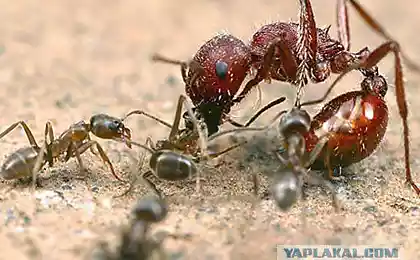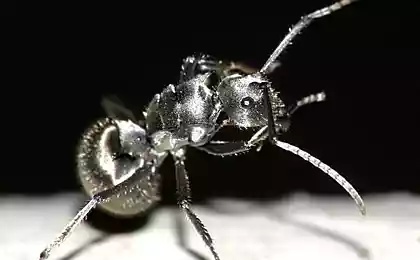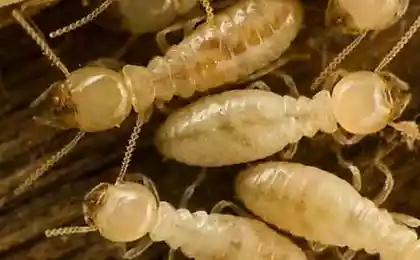671
The silky anteater
This inhabitant of the Brazilian forests is the smallest of the anteaters. Animal the size of a squirrel, a close relative of the great anteater.
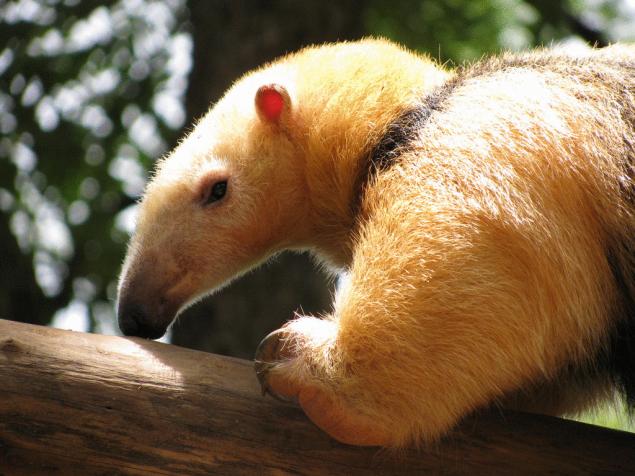
Still, the silky anteater is not like the usual anteaters. Those go on the ground, and silk – exclusively on the trees. Yes and sizes. The silky anteater is called dwarf because it rarely grows more than 20 inches. Even with long – up to 18 cm tail he is barely the size of the average anteater, tamandua, which in turn two times less than the ordinary aardvark.

The tail of the pygmy anteater is the most important tool. It helps in climbing trees. When the anteater is needed to protect the legs, he clings to the branches by the tail, and aggressively puts claws. With two on each foot. It is another feature of the silk anteater. It is therefore called two-toed.
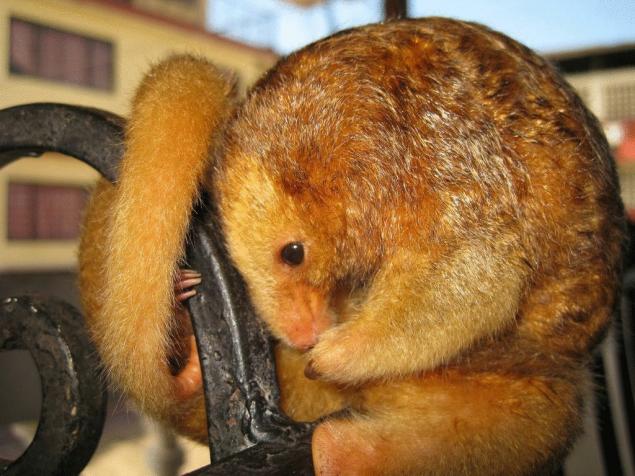
Seemingly small anteater – animal cute and funny. A lot of his charm is the fur is thick and Golden. It is said that when the silky anteater inhabits the crowns of cotton wood, silver pollen sprinkles the baby. It is a pity that so it is even more invisibly – the pygmy anteater is not easy to observe, so even the number is unknown.

Day silky anteater sleeping, curled between the branches, only at night goes on the hunt, moving slowly, lazily and quietly. He preys on ants, of course. Finds the nests of tree ants, breaks their claws. There runs a long tongue – like the rest of the anteaters. "Chews" its food chainstay anteater right in the stomach, with bone plates. This chewed, cooked food anteaters, and mom and dad, treat your baby. And take turns wearing him on the back until you get old enough to move independently.
Source: /users/155

Still, the silky anteater is not like the usual anteaters. Those go on the ground, and silk – exclusively on the trees. Yes and sizes. The silky anteater is called dwarf because it rarely grows more than 20 inches. Even with long – up to 18 cm tail he is barely the size of the average anteater, tamandua, which in turn two times less than the ordinary aardvark.

The tail of the pygmy anteater is the most important tool. It helps in climbing trees. When the anteater is needed to protect the legs, he clings to the branches by the tail, and aggressively puts claws. With two on each foot. It is another feature of the silk anteater. It is therefore called two-toed.

Seemingly small anteater – animal cute and funny. A lot of his charm is the fur is thick and Golden. It is said that when the silky anteater inhabits the crowns of cotton wood, silver pollen sprinkles the baby. It is a pity that so it is even more invisibly – the pygmy anteater is not easy to observe, so even the number is unknown.

Day silky anteater sleeping, curled between the branches, only at night goes on the hunt, moving slowly, lazily and quietly. He preys on ants, of course. Finds the nests of tree ants, breaks their claws. There runs a long tongue – like the rest of the anteaters. "Chews" its food chainstay anteater right in the stomach, with bone plates. This chewed, cooked food anteaters, and mom and dad, treat your baby. And take turns wearing him on the back until you get old enough to move independently.
Source: /users/155
Dinner among the cacti. The intriguing interior of the new restaurant El Montero in Mexico
Yoga for beginners










